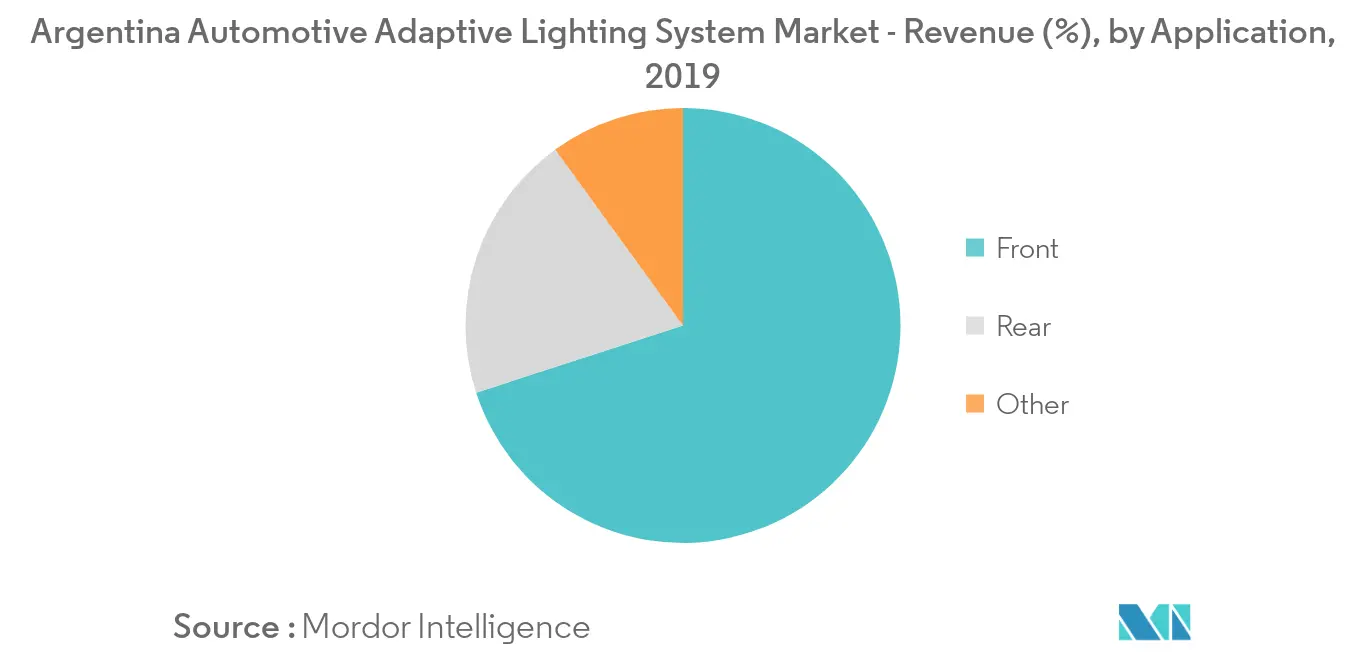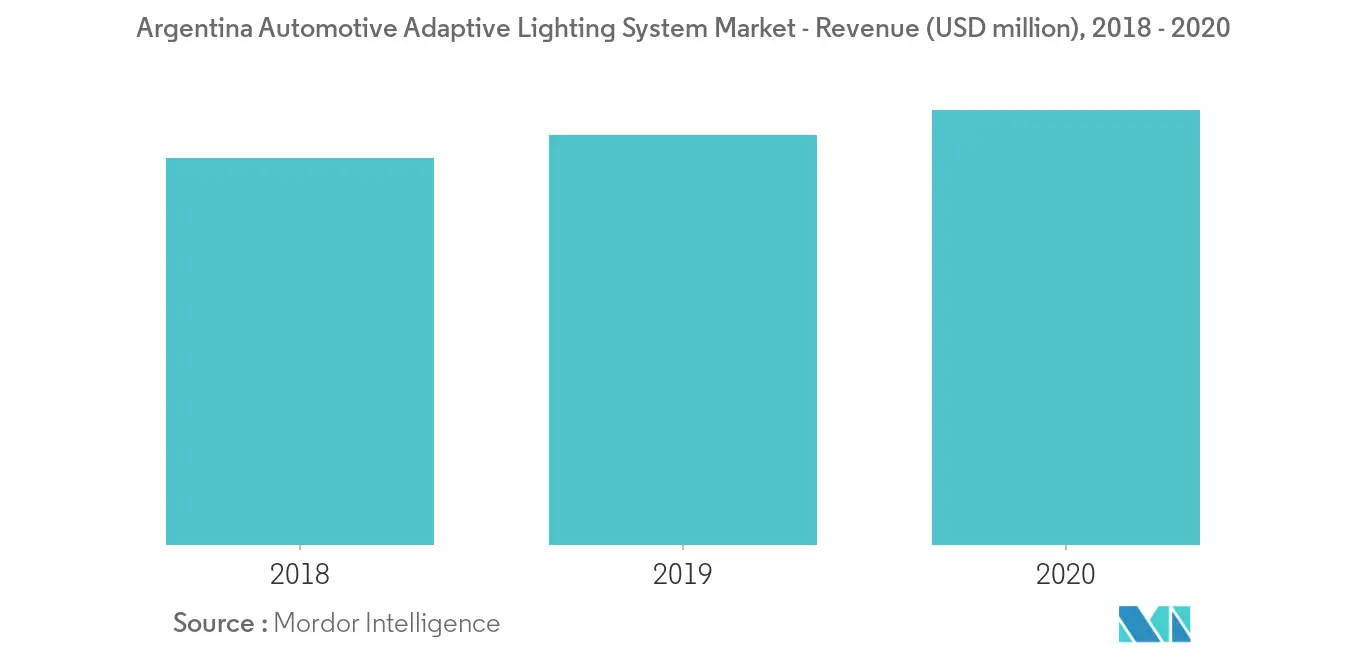Market Trends of Argentina Automotive Adaptive Lighting System Industry
This section covers the major market trends shaping the Argentina Automotive Adaptive Lighting System Market according to our research experts:
Front lightening will Lead the Market
The ALS optimizes the distribution of light from the headlights according to the driving and road circumstances. There is no need for manual operation for switching on/off the headlight or rear light. Depending on vehicle speed and steering input, the system projects the low-beam headlights in the direction the driver is intending to travel. Thereby, it saves time and effort for the driver helping him to concentrate on driving. The system provides an optimized vision to the driver during the night and other poor-sight conditions of the road by adapting the headlight angle and the intensity of the light
Improvement of visibility in the night time is a concern of critical importance due to the frequency of fatal accidents during the time. Adaptive LED and laser headlights are some of the major advancements in automotive lighting. Adaptive, or matrix LED systems use a grid of individual LEDs that automatically turns on and off based on where the car is headed and the presence of oncoming vehicles detected on the road. The basic added advantage is the use of laser headlights which provides a focused, long-range beam that can double the reach of the standard automotive high beams. Some of these systems, provide an added advantage using selective lighting to highlight the different objects in the road, which can be traffic signs and road markings, warning or hazard signs or objects that are hardly or not at all be viewed by the driver, such as deer or dimly lit pedestrians.
Leading automotive OEMs and lighting system manufacturers aredevelopingvarious adaptivefront lights for future vehicles.
Bosch intelligent headlight control utilizes a video camera to automatically adjustthe range of the low beam or high beam lights. The adaptive lightning system not only controls the range or segmentation of the light, but it can also manipulate the width of the beam according to traffic conditions.

Incorporation of more Sensors/ Camerais likely to drive the Market
Several car manufacturers and light manufacturers are having their own mechanism of adaptive lighting, but the most important role in this system is of the cameras and sensors as it provides the information to the system, and then accordingly light changes its intensity and direction. For instance,
Audi adaptive xenon headlights have the gas discharge lamps. It provides much brighter light as halogen incandescent lamps also their energy consumption is 20 percent less. Audi offers these headlights in every model either as standard or as an option. This module is electromechanically rotated for the adaptive light.
Similarly, in Hella adaptive headlight systems, the company's VarioX® module is combined with a swiveling module. In the combination in between the light source and the lens, there is a cylinder that can be rotated in its longitudinal axis. The outer surface of the cylinder generates different light distributions on the road and the stepper motor turns the cylinder to the required position within milliseconds.
Whereas, BMW Adaptive Headlights comes with optional glare-free High Beam Assist which controls the main beam of the headlights for proper illumination of the road.In this system an image sensor which is inside the front mirror looks after the lighting conditions and the traffic ahead up to a distance of 400 meters.

